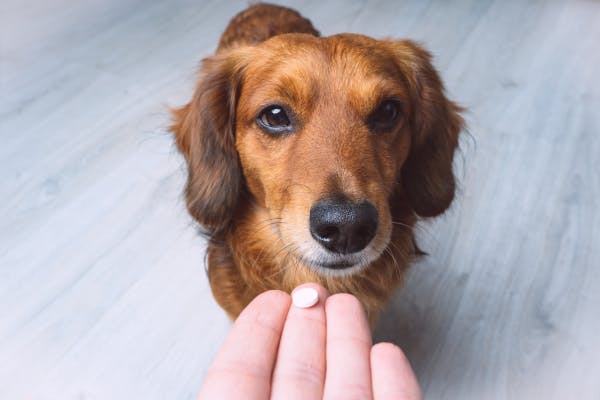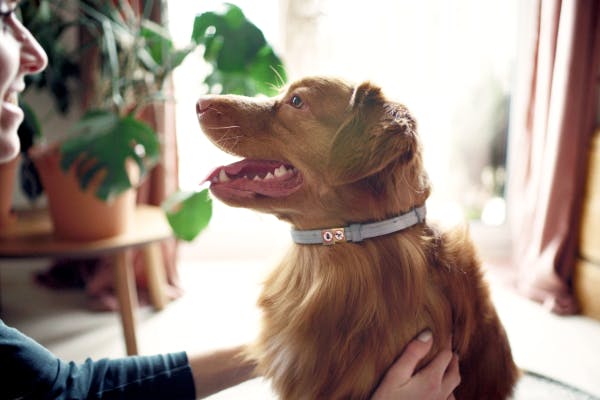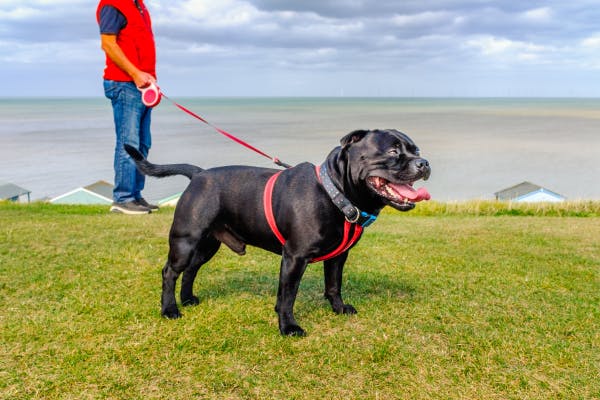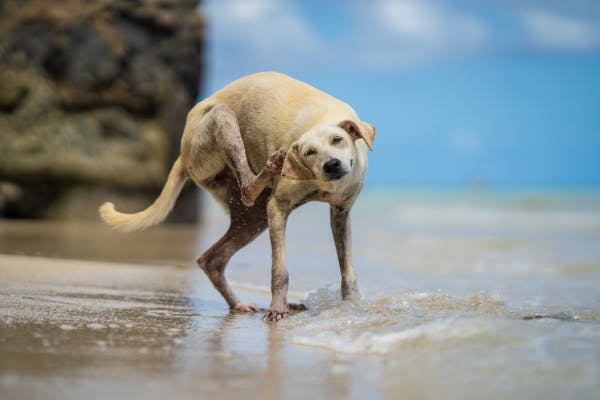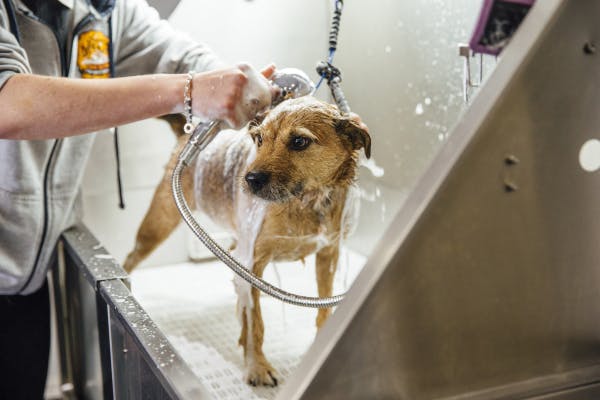learn about hands free dog leashes
Canicross Guide: Hands Free Leashes, Training, and Safety Tips
Mastering Canicross involves choosing the right harness and leash, training your dog for running and endurance, using proper running techniques, and staying safe on the trails.

Canicross is a sport that allows you to bond with your dog while engaging in physical activity. It involves a human runner wearing a comfortable waist or hip belt and the dog wearing a specially designed harness made for pulling. To master Canicross, it's important to select the right equipment, train your dog effectively, practice good running techniques, and prioritize safety.
Choosing the Right Harness and Leash for Canicross
When it comes to canicross, selecting the right harness and leash is crucial. It's not just about comfort, but also safety and performance. Here are some key factors to consider when choosing the perfect gear for this exciting sport.
Type of Activity
The type of activity determines the kind of harness and leash needed. For activities involving running or bicycling where a dog pulls its owner along, a pulling harness is necessary. This type of harness has an attachment point at the base of the dog's tail to prevent stress on its spine.
For more casual activities like walking or hiking where a dog doesn't pull much, an all-round harness would be a better choice. If training a dog not to pull, consider a harness with an anti-pull attachment point.
Ergonomic Fit
An ergonomic fit is essential for any dog harness. A well-fitting harness prevents injuries and ensures comfort during activities. Harnesses with a Y-shaped front allow free shoulder movement and minimal breathing constraint, making them ideal for active dogs.
Quality
Quality should never be compromised when choosing a harness or leash. Dogs put their gear through rigorous tests every day, so strong and durable materials are vital for safety reasons. A high-quality harness will last longer, making it a more sustainable and cost-effective choice in the long run.
Specific Harnesses for Specific Activities
For high-energy activities like canicross, bikejoring or skijoring where a dog pulls its owner along, specific types of pulling-harnesses are available. These have been designed with attachments at the base of the dog's tail to avoid stress on its spine while optimizing performance.
For less intense activities like walking or hiking where pulling isn't much of an issue, multi-use dog harnesses would be suitable. These versatile pieces can handle various activities while ensuring comfort and safety for pets.
Hands-Free Leashes
Hands-free leashes are another great option for canicross enthusiasts. These leashes clip onto a belt around the owner's waist, freeing up their hands entirely during activity sessions. They're especially useful when running as they allow both the person and their pet to move freely without worrying about holding onto a leash.
However, keep in mind that hands-free leashes may not provide as much control as regular ones do. They're best suited for well-behaved dogs who already know how to walk politely on a leash without pulling too hard.
When choosing the right leash and harness, consider the type of activity with the pet, ensure an ergonomic fit for comfort and safety, prioritize quality over price, and decide whether hands-free options would suit both the person and their pet's needs.
Training Your Dog for Canicross: A Complete Guide
Canicross is a sport where a dog runs in front of its owner, pulling them along. It's an excellent way to bond with a pet and enjoy nature together. To begin canicross, a dog needs to be old enough and fit enough for the challenge. Here are some tips on training a dog for canicross.
Teaching a Dog to Run in Front
In canicross, the dog runs ahead of its owner. Some dogs naturally enjoy pulling, while others may need more guidance to understand what's expected of them. The key is to make the experience positive from the start.
Start slow and don't expect too much from the dog at first. Praise them when they do something right and break down tasks into manageable pieces that they can handle. For example, if a dog is shy or cautious, start by rewarding them when they lean into the harness. Gradually increase the difficulty by allowing them to go further each time.
Keep training sessions short and introduce new challenges one at a time. If there is an experienced dog who already enjoys canicross, involve them in training the less experienced one - dogs learn well from each other!
Teaching a Dog Verbal Cues
Verbal cues are helpful in canicross as they guide the dog during runs. Common commands include "gee" for turning right and "haw" for turning left.
To teach these cues, start by walking with the dog on a leash. When turning right, say "gee" and reward with treats and praise; do the same with "haw" when turning left. Gradually increase difficulty by allowing the dog to be further away while offering less support.
Preparing a Dog for Competitions
If planning on competing in canicross races, several skills will come in handy during competitions:
Staying calm in the starting area
Building good start routines
Overtaking other teams (especially important if the dog is reactive)
Maintaining full speed across the finish line without slowing down
These skills will not only improve performance but also ensure that race day goes smoothly.
Building Endurance
To build endurance for longer runs, keep training sessions short and fun at first then gradually increase distance over time. This approach ensures that the dog feels successful, which builds confidence alongside physical strength and stamina.
Finding Canicross Trails
When looking for suitable trails for canicross runs, consider factors such as:
The trail's suitability for running (consider terrain type)
Proximity to home
Safety (avoid busy roads or dangerous wildlife habitats)
Always respect nature when out on trails - leave no trace behind!
Participating in Canicross Races
Most countries have local canicross clubs that organize races regularly - check their websites or social media pages for race calendars! If there are no nearby races available, virtual races are also an option.
Remember: Before every training session or race, always warm up properly! This helps prevent injuries and ensures both the owner and their dog have a great time participating in this exciting sport.
best hands free dog leashes
- our rating95 out of 100
- our rating91 out of 100
- our rating86 out of 100
Proper Running Techniques with Your Dog
Running with a dog can be a rewarding experience, but it's important to do it correctly. This includes using the right equipment, understanding the dog's physical capabilities, and practicing good running techniques.
A hands-free leash is essential when running with a dog. This type of leash allows for running without holding onto a leash, freeing up hands and allowing for a more natural running form. The leash attaches to a belt around the waist and features a unique bungee system that absorbs the shock of sudden movements from the dog.
Choose a hands-free leash with adjustable settings to adapt it to different environments. For example, let the dog run further ahead in open spaces but keep them closer in busy or urban areas. Some leashes also have control handles for quick access when needed.
While running with a dog, maintain an even pace that matches their physical abilities. Dogs aren't naturally inclined to run at the same speed as humans – they usually prefer faster or slower speeds depending on their breed and size.
Pay attention to the environment while running with a dog. Be aware of potential distractions or dangers such as other dogs, wildlife, or traffic. Adjust the route or pace if necessary.
Here are some tips for proper running techniques with a dog:
Warm up before starting the run: This could involve a short walk or gentle jog.
Watch the dog's body language: They will show if they're tired or uncomfortable.
Stay hydrated: Bring water for both runner and dog.
Respect others: Not everyone is comfortable around dogs, so make sure yours doesn't intrude on other people's space.
Cool down after the run: Just like humans, dogs need time to cool down after exercise.
Keep in mind that every dog is different and what works for one may not work for another. Always consult with a veterinarian before starting any new exercise program with your pet. With patience and practice, running can become an enjoyable activity for both the runner and their dog!
Building Endurance and Strength for Canicross
Canicross is a sport that combines a love for running and spending time with a dog. It involves a human runner wearing a comfortable waist or hip belt while the dog wears a specially designed harness made for pulling. This activity requires both partners to share the load of moving forward, developing an incredible bond through teamwork and communication as they navigate trails and tackle obstacles along the way.
Establishing A Training Routine
Starting a canicross journey requires setting up a consistent training routine to ensure both the person and the dog become proficient endurance runners. A well-structured routine can include the following steps:
Start with short bursts of running during daily walks, then build up to longer distances.
Gradually increase distance and speed to avoid injury and exhaustion.
Include bodyweight exercises like push-ups, squats, step-ups, and lunges in the routine for muscular strength & conditioning.
Perform 4 to 5 sprint sessions once or twice per week to build stamina.
Always warm up with light cardio first before starting any exercise.
Building Endurance
To build endurance for canicross training, it's important to start gradually and slowly increase the duration of runs.
Begin with a warm-up walk for 5 minutes.
Jog or run for 1 minute, then walk for 2 minutes.
Repeat this cycle for 1 mile.
Cool down with a 5-minute walk.
Increase the running time by one minute each week while reducing the walking time by half until continuous running without walking breaks is possible.
Nutritional Intake
A good training plan involves more than just exercise but also making good nutritional choices.
Replenish depleted energy with quality carbohydrates, fats, and proteins after each training session.
Stay hydrated by drinking plenty of water before, during, and after exercise.
Keep in mind that puppies shouldn't participate in strenuous exercise until their joints have finished growing, which is usually at about one-and-a-half years old.
By implementing these tips in establishing a training routine, beginner runners can prepare themselves and their dogs for successful participation in canicross races while promoting stronger bonds between them.
Staying Safe on the Trails: Tips for Canicross Runners
Canicross is an outdoor sport that combines trail running and dog sledding. It's a great way for people and their dogs to get exercise while enjoying nature. But, like any sport, it's important to be safe when doing canicross. Here are some tips to help stay safe on the trails.
Check Your Dog's Health: Before starting canicross, make sure the dog is healthy enough for running and spending time on trails. A visit to the vet can confirm that the dog is ready for this activity and doesn't have any health issues that could get worse from exercise.
Build Your Dog's Stamina and Endurance: Just like people, dogs need to build up their strength before going on long or difficult runs. Start with short distances and slowly increase the length of the runs as the dog gets stronger.
Be Aware of Age Restrictions: Most dog breeds should not run long distances or often until they are at least one year old because their joints are still growing during this time. Too much exercise can cause joint problems that might not show up until later in life.
Use Appropriate Gear: Using the right gear is important for safety in canicross. This includes a harness made for pulling sports like canicross and a hands-free leash that attaches securely around a person's waist – often called a bungee or waist belt.
Pay Attention to Weather Conditions: Weather conditions can affect safety during canicross runs. In hot weather, make sure both person and dog drink enough water and try to run during cooler times of day if possible. In cold weather, think about using special booties for dogs to protect their paws from the cold.
Be Alert for Hazards on the Trail: When running on trails, always watch for things like rocks, roots, or other obstacles that could cause trips or falls.
By following these tips, people will be ready for safe and fun canicross runs with their dogs!




